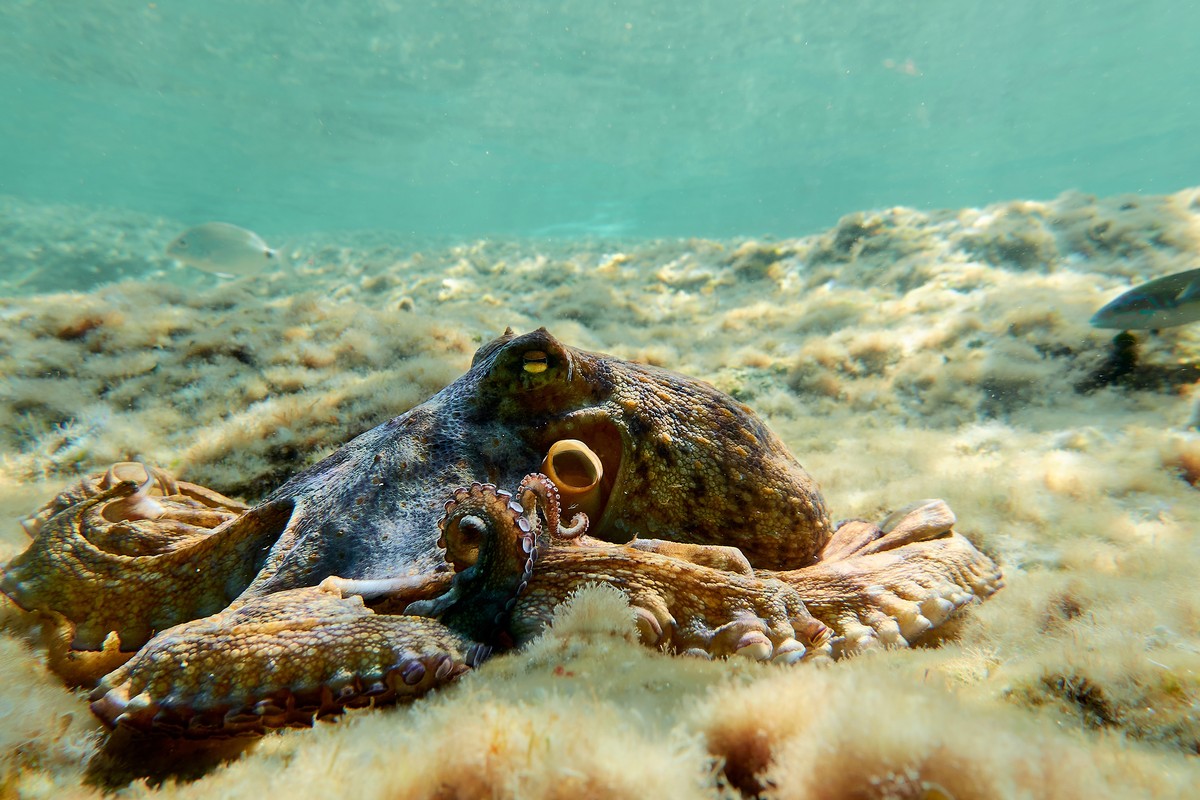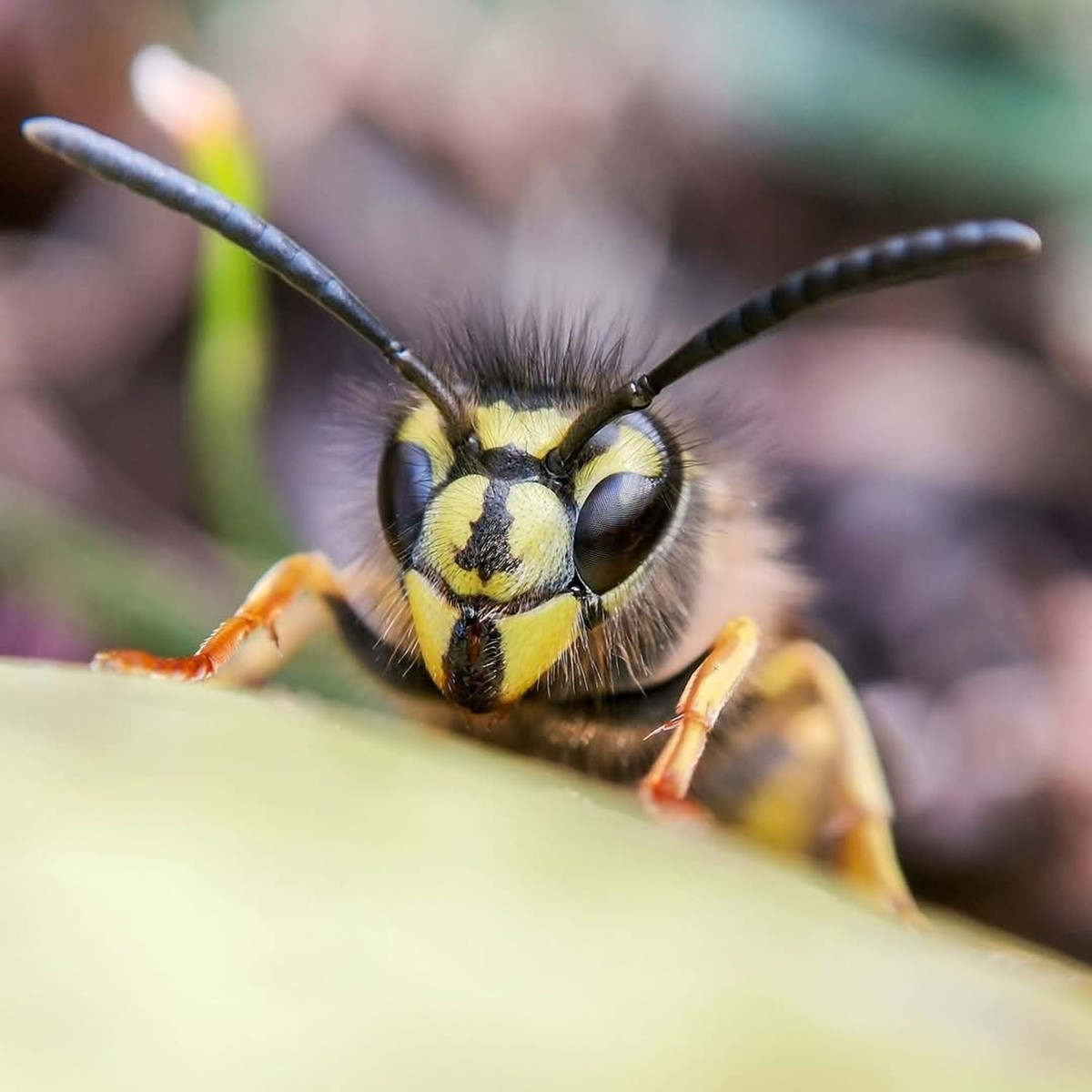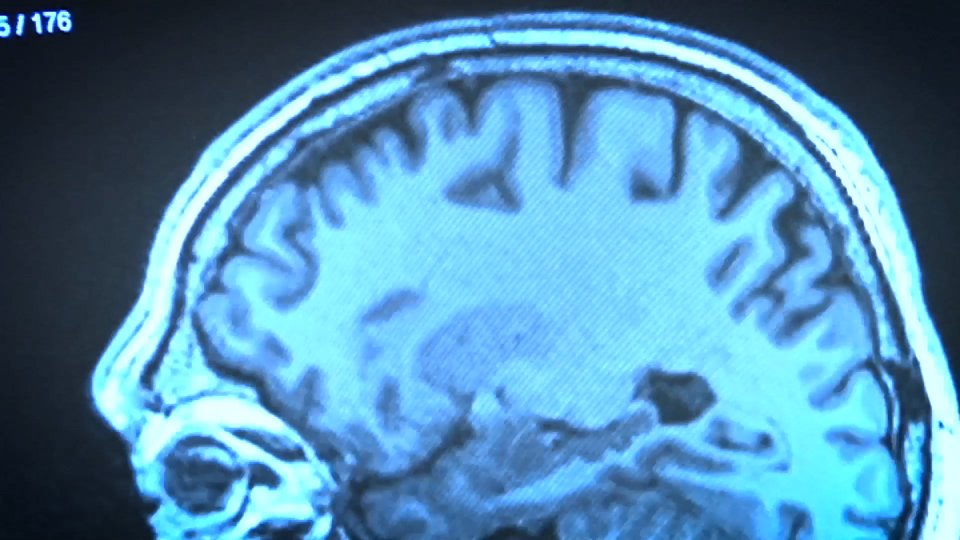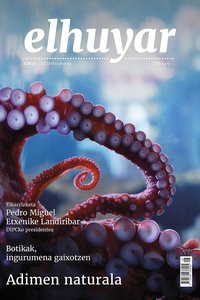The natural intelligence
Artificial intelligence has revived the debate about intelligence itself: what is intelligence, what is the difference between what we call human intelligence and artificial intelligence, what is the structure on which they are based... Along with this debate, recent studies on the structure and cognitive abilities of animal brains have shown that some of the assumptions that have been rooted so far are incorrect. In essence, and once again, the vision derived from the anthropocentric mentality has been questioned.
According to the anthropocentric approach, of all animals, the human being is the species with the most complex brain and the highest cognitive abilities. There was also a hierarchy among other animals. Thus, the difference between the brains of reptiles, birds and mammals was thought to be mainly at the level of complexity. That is, they would have the same structure at the base, but the complexity would increase as they ascend in the hierarchy.
However, two recent studies published in the journal Science have completely refuted this hypothesis. In fact, it has been shown that the brains of reptiles, birds and mammals have evolved through different pathways and independently developed complex brain circuits.
The Ikerbasque researcher Fernando García Moreno, from the Achucarro centre and the UPV/EHU, has participated in these two studies, confirming that the result is an example of convergent evolution. This is what is called the formation of analogous structures in different species; that is, the formation of structures which the species from the common ancestor did not possess and which have a similar form and function. They have shown that this has happened with the brains of reptiles, birds and mammals: from different bases, each has evolved in its own way, so that, in the end, the same cognitive functions can be carried out. In García’s words, “the mind or complex brains have been reinvented separately in evolution.”
The convergent evolution
García compares it to the wheel: “You can make wheels of many different shapes: triangular, square, pentagon... In the end, in different places and at different times, it has always prevailed round. For what reason? Well, because that works best. Due to technological or cultural convergence, unrelated human groups, using different routes and different materials, have come to the same solution. The same has happened with the brains of different groups of animals. The difference is not that although they have the same basis, some are more complex than others; they have developed the same level of complexity for the same functions, starting from different bases and using different paths.”
Just as the bodies of birds are adapted to fly, so are their brains adapted to this, and the neurons have nothing to do with those of mammals. To explain this, García goes back on the evolutionary evolution: “The brain of all birds, on the one hand, is very homogeneous. This means that they all come from one species, and that this common species was already flying. Why is the brain of birds so rare? Because he has adapted to fly in a secondary way; just like the bones are empty, to weigh less. On the other hand, the neurons in the brain have taken a very small size, and they have also been compacted. Therefore, when you study the brain of a bird, you will not find layers and areas, as in that of a mammal. You'll find dense neural masses on the Madrid subway at around 7:00 a.m. In this way, they can reduce the weight and size of the brain.”
In general, in animal species, there is a correlation between the measurement of the individual and that of the cells. Neurons are a cell type, so the neurons of an elephant are much larger than those of humans. However, according to García, this does not happen with birds, which have many more neurons in the same place: “If you take two brains that weigh 100g, one from a primate and one from a bird, you will see that the primate contains half of the bird’s neurons. And if you compare it to that of another mammal instead of the primate's brain, the latter will probably contain about a third of the bird. Because birds need a complex brain to process information, but it also needs to be agile.”
The differences go beyond measure and consistency. Also during embryonic development, mammalian and avian neurons have been shown to be derived from different cells. This is how García explains it: “We investigated neuronal development in birds, reptiles, and mammals, and found that they do not originate at the same sites, are not formed from equivalent stem cells, and do not evolve following the same temporal sequence.” Everyone does their own way. This evidence completely refutes the idea of hierarchical development that places the human being at the top.
Just a few days after the publication of these studies, the journal Nature published another work in birds. Circuits related to vocalizing power were studied in the papagaitxes, which show greater flexibility and control than other species. And they have shown that papagaitxes and humans have similar areas in the brain associated with vocalizations with similar functioning. This has also been considered by researchers as an example of convergent evolution.
From a human perspective
Dr. Maider Pérez de Villarreal Zufiaurre is a veterinary doctor specializing in ethology. Ethology is a science that investigates the behavior of animals, and also from this aspect, Pérez de Villarreal confirms that we are blind to the anthropocentric approach in the study of other living things: “That’s why we find the intelligent behaviors of different species so surprising, because we see them through our filter.”

He is currently engaged in the didactics of experimental sciences, using, among other theories, Howard Gardner's theory of multiple intelligences. “Within this theory, one of the definitions of intelligence is: the ability or ability to solve or overcome problems, or the ability to create new products that are useful for one or more cultures. We often use this definition to say that a species is intelligent. And what are we based on? Well, they usually have three characteristics in common for us to consider them intelligent. One is sociability; the other is longevity; and finally, the use of tools. But with these characteristics we only consider animals, and we are losing the other four kingdoms: plants, fungi, bacteria and protists. These survivors are also able to avoid and overcome their own problems.”
In any case, returning to animals, Pérez de Villarreal believes that “if we removed the filter of anthropocentrism, we would end up saying that all animals are intelligent and that some of them have, in some way, a greater intelligence”. Among the latter, experts highlight not only birds, but also octopuses and social insects for their peculiarities.
In the case of octopuses, the complexity and cognitive abilities of their brain are noteworthy, especially considering that they are invertebrate. In a study published in the journal BMC Biology in 2022, it was clarified that the origin of the neuronal and cognitive complexity of octopus can be found in its molecular analogy with the human brain. Specifically, they found that the same transposons are active in the brains of humans and octopuses. Transposons are fragments of DNA that have the ability to move from one place in the genome to another, and in both humans and octopuses, a family of transposons, called LINE, is active and participates in the same processes: study and memory.

This is another example of convergent evolution, and the study also mentioned that among all species, unique in octopuses and humans, the activity of LINE elements has been demonstrated in the cerebral lobes that control cognitive abilities.
Adapted to the environment
Moving from the molecular level to the behavioral level, Pérez de Villarreal confesses that the documentary My Octopus Teacher has left a mark on him: “I don’t think there are many studies on the relationship between a person and an octopus.” The documentary tells the story of filmmaker Craig Foster’s friendship with an octopus that lives in an algae forest in South Africa. “It is very beautiful to see how trust, friendship... is born between individuals of two species so different that it is not only intelligence; it is also these other abilities. And octopuses are, in fact, solitary species. They are also nocturnal, and to create this relationship, the human had to go to the octopus habitat at night.”
In fact, Pérez de Villarreal emphasizes the importance of the environment, recalling a quote attributed to Albert Einstein: “If a fish is judged by his ability to climb trees, he will be considered a fool for the rest of his life.” Therefore, if we look at it with the exception of the anthropocentric filter, we should recognize that the octopus is an incredibly intelligent being in its environment. He has given several examples that support this: camouflage capacity, memory, planning, use of tools... An octopus that they had at the University of Otago (New Zealand) learned to turn off the lights: it threw water jets at the bulbs from its water tank. In the end, the workers decided to release him, since it was very expensive to repair the electrical faults caused by the octopus.
Perez de Villarreal is concerned about the ethical nature of keeping these animals in aquariums. “When aquariums were created, fish and invertebrates were not considered intelligent. Now we know that they have intelligence, and the laws also take this into account. For example, in the United Kingdom they give toys to octopuses, and each one has its own, because each individual has its own peculiarities, just like we do. The fact is that the octopus, being invertebrate, does not have a skull and the organ with cognitive function is not like ours either. But as we’ve seen, that doesn’t mean they’re less. It should also be noted that they have a very short life. How do they transmit all this knowledge to future generations? Maybe it has something to do with epigenetics.”
There are those who say that the octopus has nine brains. In fact, octopuses contain about 500 million neurons (similar to dogs), two-thirds of which are distributed in tentacles. This makes tentacles very independent and sensitive, and also requires effective integration to control everyone’s movements and perceptions together. It doesn’t look much like our brain, nor is it surprising, because, as Pérez de Villarreal reminded us, we separated from our common ancestor 500 million years ago.
The intelligence of insects
Insects are even further away from us than octopuses. Previously, insects were thought to be similar to small biological robots, creatures that behaved according to an innate algorithm. In social insects, intelligence was considered an emergent property, a characteristic that arose from community organization. However, more and more studies have shown that insects are able to change their behavior and learn new things based on their experiences and needs.
Maider Pérez de Villarreal gives an example about wasps to indicate the complexity of insect intelligence. “Insects have a structure in the brain called pedunculated bodies; it is for multisensory integration, spatial memory and group learning. Within wasps, some species are solitary and others are social. Specialists at Drexel University in Philadelphia studied 29 species of social wasps and solitary wasps. And they found that as social behaviors of social wasps evolved, the brain regions associated with cognitive processing decreased. In addition, they demonstrated that the pedunculated bodies of solitary wasps were significantly larger than those of social wasps. For researchers, it could be that social wasps, relying on their peers, invest less in their individual intelligence.”

In another example the bees are the protagonists: “In a study in the UK, the bumblebees were taught to move a ball and get into a hole. And they proved that some learned by seeing others, by imitating them. Just like us, I mean.”
Studies have also been carried out in several other species to study the intelligence of the individual and that of the group, as well as in ours. For example, based on ants, some researchers have proposed that during evolution, the human brain has decreased as a result of the growth of collective intelligence. As in the case of wasps.
Consciousness of animals
The debate about the evolution of the animal brain has not been closed, and more and more experts believe that insects, octopuses, crustaceans, fish and other undervalued animals have a conscience. Thus, in 2024, a group of biologists and philosophers published the New York Declaration on Animal Consciousness at the University of New York at a conference entitled “The Emerging Science of Animal Consciousness.”
The statement contains only three points. According to the first, scientific studies also recognize the consciousness of animals other than mammals or birds. In the second, they assert that there are “realistic indications” that all vertebrates and numerous invertebrates may be aware. Finally, they are called to be aware of this and to act responsibly towards animals. And for this, it is essential to completely abandon anthropocentrism.
Buletina
Bidali zure helbide elektronikoa eta jaso asteroko buletina zure sarrera-ontzian












